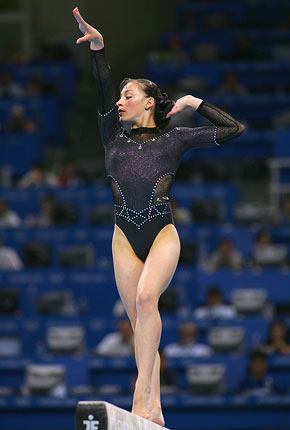
Athens, 23 August, Games of the XXVIII Olympiad. Women's artistic gymnastics: Catalina PONOR of Romania competes on the balance beam during the individual competition at the Olympic Sports Complex Indoor Hall. Credit: Getty Images/Ezra Shaw
A perfect fusion of athletics and aesthetics, gymnastics ranks among the defining sports of the Olympic Games. Mixing strength and agility with style and grace, the high-flying acrobats have provided many of the most breathtaking Olympic spectacles of the past quarter-century.
Nadia Comeneci's perfect 10 score at the 1976 Montreal Games, the first ever awarded, remains the high-water mark for most gymnastics fans. The 14-year-old Romanian achieved the seemingly impossible seven times in Montreal, a feat so unexpected that the scoring technology was set up for only three digits. Her 10.00s were displayed as 1.00.
Gymnastics has a long, proud history. The sport can be traced back to ancient Greece, where such skills featured in the ancient Olympic Games. Ancient Rome, Persia, India and China practised similar disciplines, mostly aimed at preparing young men for battle. The word itself derives from the Greek word gymnos, meaning naked - dress requirements for athletes in those days were minimal, to say the least.
Competition
In artistic events (performed on an apparatus), men compete in floor, pommel horse, rings, vault, parallel bars and horizontal bars. Female gymnasts compete on the vault, uneven bars, balance beam and floor. The competition includes all-round events and team events, also scored over each apparatus.
(BOCOG)